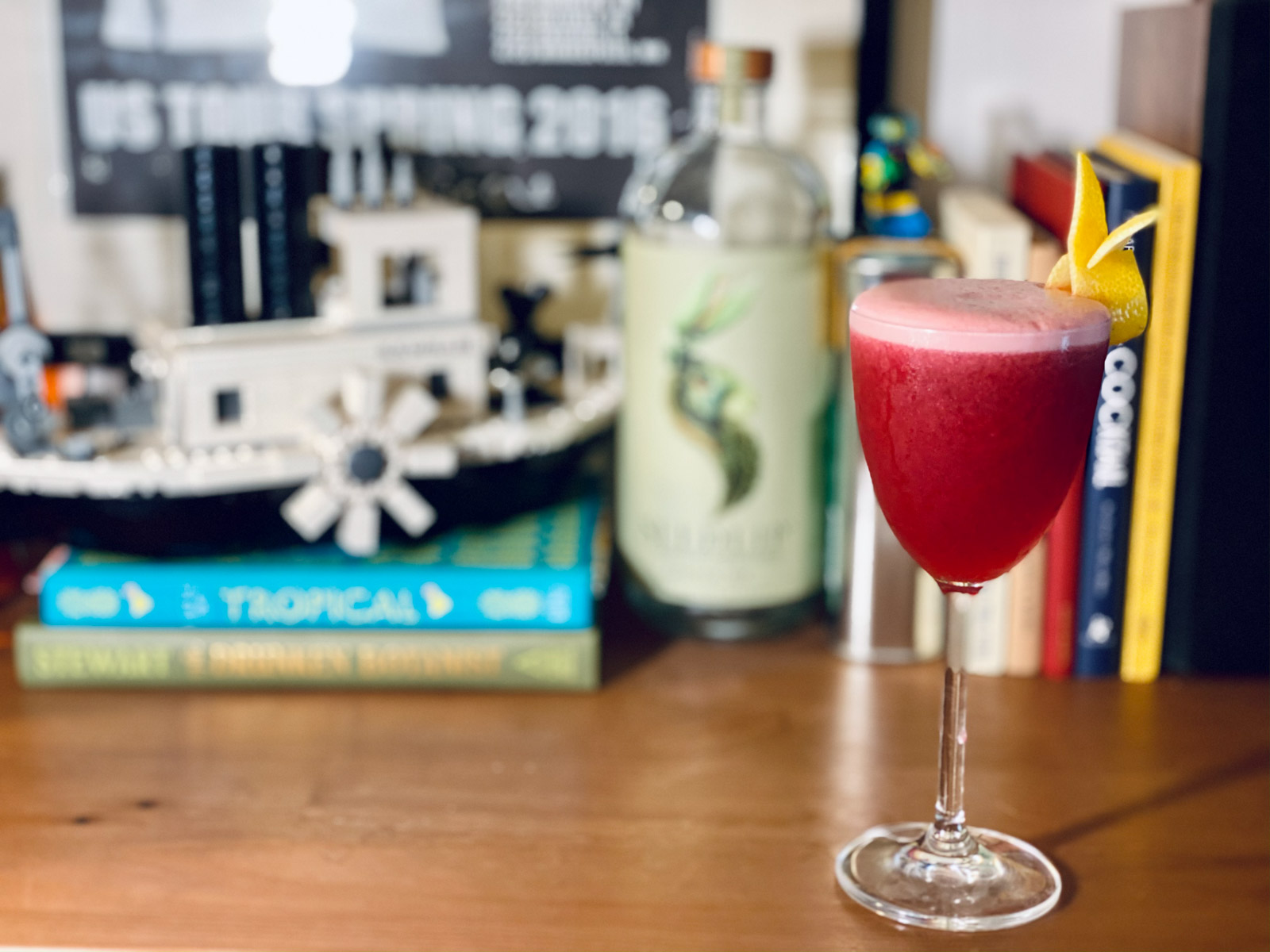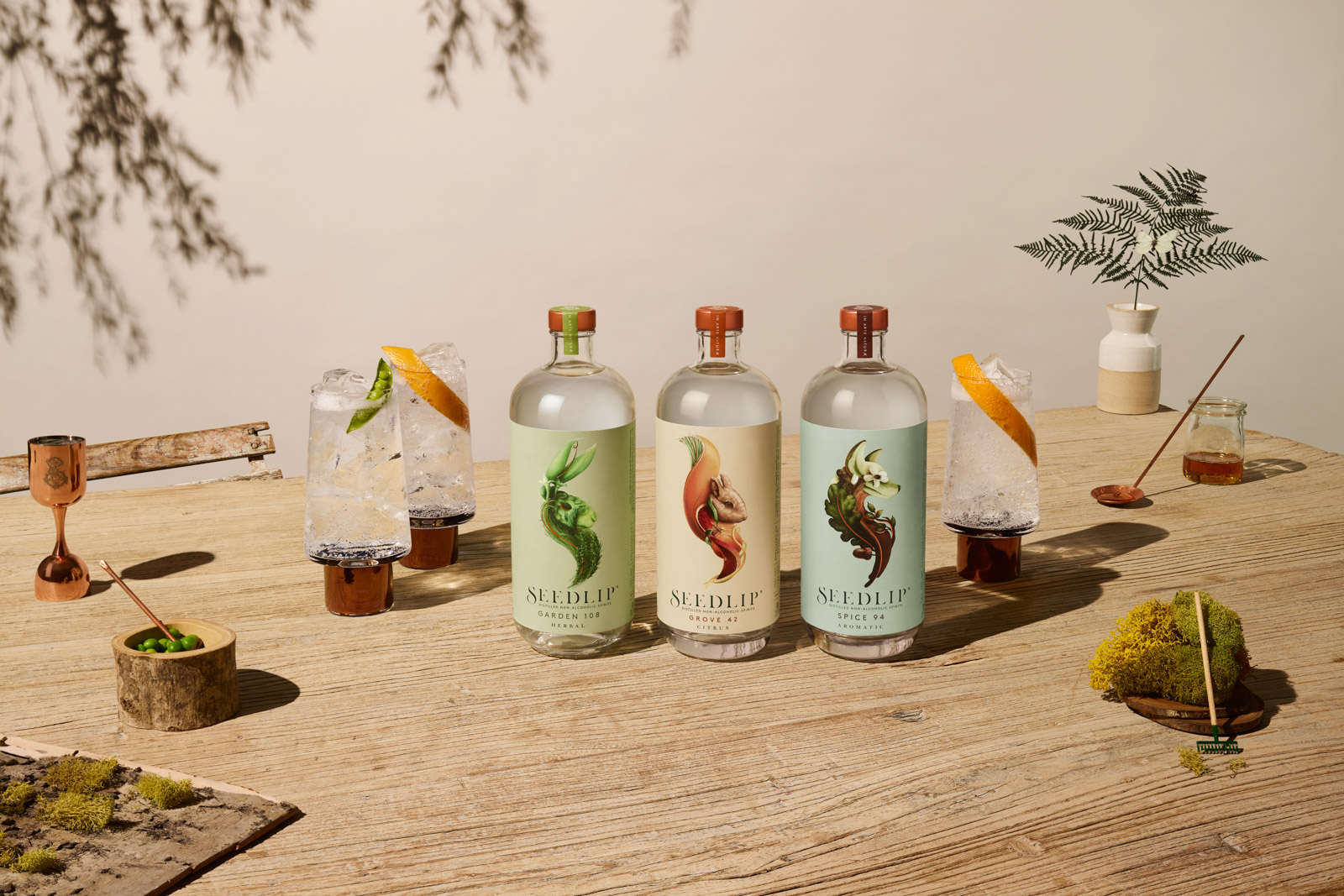When I first heard about the English non-alcoholic spirit company Seedlip, I was sitting around my kitchen table with a group of friends, all of them foodies, fermenters and flavour enthusiasts. What, one friend wondered, pulling up an article on his phone, is Seedlip, actually? The company calls its product a “distilled non-alcoholic spirit.” But what is that, someone else wondered. If there is no alcohol in the product, what are they distilling? And what makes it a spirit? And, another asked, how could this idea possibly work?
Speaking to Seedlip’s founder Ben Branson over Zoom from his farm in England, recently, I finally got my answers.
But first it’s worth understanding why making a non-alcoholic spirit is so difficult. Alcohol (specifically ethanol, the kind we drink) is not just an intoxicating drug; it’s also a powerful solvent, capable of absorbing the delicate oils and volatile molecules from herbs, spices, and fruits far more efficiently than water. This is why, for thousands of years, humans have soaked spices and medicines in wine and spirits to extract their essences, and why the bouquet of a bottle of crème de menthe is far more potent than a glass of mint iced tea. The science of the cocktail, from floral gin to herbal bitters, is founded on the remarkable ability of ethanol to capture, hold, and preserve flavour.
So, when I sat down with Branson, the scion of a 320-year-old Lincolnshire farming family, I asked him how he does it. The answer goes something like this:
It starts with the ingredients: English peas and floral herbs for one concoction, lemon and allspice for another. Each ingredient is individually macerated and mixed with—and here’s the surprising part—grain alcohol, which works its magic on the flavourful compounds in the plants.
Next, Branson distills off a portion of the alcohol with the flavour molecules in tow. Then he distills the resulting mixture again, at precisely the right temperatures to pull away the alcohol, while leaving much of the flavour intact. The flavourful compounds are then filtered and mixed with water, and Seedlip is born.
“The goal is to create something from nature that tastes adult and sophisticated and comes alive when mixed. You get a great drink, and don’t feel like you’re missing out,” Branson says. He takes particular pride in Seedlip’s shelf stability, so that it can take its place at the bar beside any bottle of gin or whiskey. The ceremony and process of liquor, he says, is as important to match as the flavour.
“We were adamant that we could have all of the ritual, and people could still feel good about what they were doing, and have all the complexity and depth and length of flavour, that it can be sipped.”
Straight out of the glass, Seedlip tastes unlike anything else. Garden 108 is a mouthful of countryside, with hay, flowers and herbs. Grove 42 has a more familiar grapefruity nose, but catches you by surprise on the tongue because—like all of Seedlip’s spirits—it has no sugar. Seedlip is all aroma without the expected alcoholic burn or sweet kick, creating an almost synesthetic experience of disembodied smells floating on your tongue.
Where Seedlip really comes alive, however, is with soda water or tonic, or mixed into a cocktail, where the ghostly aromas of the spirit are given some body and context. Branson says Seedlip palomas and cosmopolitans are popular, but that the real strength of the ingredient is its ability to break through conventional categories.
“I really didn’t want to just try to make a non-alcoholic gin, and just put juniper in there. I have a lot of respect for what alcohol companies do, and I don’t believe that if you take neutral grain spirit out of the thing you can make it taste exactly the same,” he says. “It’s all about flavour. It doesn’t necessarily matter about category or history or tried and tested cocktails. There’s an opportunity to play here.”
We asked Vancouver-based mixologist Kaitlyn Stewart of @likeablecocktails to mix us up an original non-alcoholic cocktail using Seedlip. Try foraging some fruit from Vancouver’s many wild Himalayan blackberry bushes for this summery treat.
Full Bloom Cocktail

Photo by Kaitlyn Stewart.
Ingredients
For the syrup:
1 cup sugar
1 cup water
1 tablespoon butterfly pea flowers or tea
For the cocktail:
2oz Seedlip Garden 108
½ oz butterfly pea flower simple syrup (or basic 1:1 simple syrup)
¾ oz lemon juice
5 whole blackberries
3 sprigs of thyme
1 egg white
Method
For the syrup:
Add sugar and water to a saucepot over medium heat. Add butterfly pea flowers and bring to a simmer. Take off the heat and let cool completely. Once cooled, fine strain syrup into a bottle or jar.
For the cocktail:
In a shaker tin add the blackberries and muddle. Add the Seedlip Garden, whole thyme, butterfly pea syrup, lemon, and egg white. Dry shake to emulsify the egg white. Add ice and shake once again to dilute, about 10 seconds. Fine strain into a chilled coupe or Nick & Nora glass. Garnish with a lemon twist.
Read more local Cocktail recipes.









